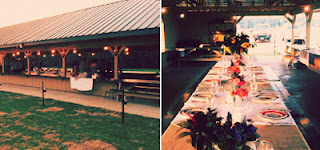Happy
Cow Creamery
For many health aficionados raw milk is
nutritionally a perfect food, but is a commodity that is not always easy to
find and for some folks the health concerns of drinking milk straight from the
udder is a little worrying from a disease standpoint. So what is the next best thing to raw milk,
one that alleviates the worry of bovine tuberculosis and brucellosis while
maintaining its nutritional content -
answer: milk that is not heated beyond 145 degrees Fahrenheit and not
homogenized; and that’s the milk you get from Happy Cow Creamery. SO how happy
are the cows? Well given their lush pastures pretty much guaranteed year round
life is quite good…for a dairy cow.
Milked twice a day these Holsteins are relieved of their 74lb plus load
of milk in a procedure lasting not much more than ten minutes, so they fair
quite a lot better than their industrialized counterparts who are usually
milked three times a day. Dairy cows are worked harder than any other farm
animal since tractors and ploughs became motorized. Milk production is ten months of the year at
Happy Cow Creamery leaving a two-month rest period in the final stages of a
cow’s pregnancy. Famer Tom’s eighty or so milking cows have about 70 acres at
their disposal and are corralled and moved around on a rotational grazing
system. On a not so “happy” note and to
reiterate the sad demise of family farms - in the 1980s there were 44 dairies
in the counties of Pickens and Greenville, now there is only one - the Happy
Cow Creamery.
Tom Trantham the owner of HCC was formerly
an ‘industrialized’ dairy man and tells a cute story (apparently true) about how when at the end
of his tether, down to his last dollar, and about to sell his herd before the
bailiffs moved in, it was one of his own cows who showed the rest of the herd and Tom that all was not lost so long as
there was fresh green forage to eat; that the lush pasture on the farm was all
they needed to produce the richest creamiest milk, and that Tom didn’t need to
be spending thousands of dollars on feed to produce milk that didn’t compare to
the new pasture produced milk rich in GLAs and omegas. "Here's this big 1,400-pound cow, and
she's standing there in the lush April growth, and she just takes the top half
of the plants, and then moves on," he says. "I said, 'Whoa, cow!” And there began what Farmer Tom call’s
his “12 Aprils’ rotational pasturing –
year round ‘April fresh’ forage. There
are 29 pastures at Happy cow Creamery and the dairy herd is moved daily to
fresh forage, the cows eat the soft green tops off the grass and move onto the
next pasture, by the time they get back to the first pasture again the forage
has regrown and so the cycle moves on.
After each paddock has been grazed a few times it will be bush-hogged
down and over seeded with a mixture of grass seasonal appropriate, and so
continues the cycle of year-round green pasture for the dairy herd. Farmer Tom does feed a little grain as a
supplement and also as an incentive to get the girls into the parlor. The parlor is small (only 4 cows inside at a
time) therefore calm and stress-free so getting the girls to meander and
line-up at the milking shed is not really an issue.
After leaving his industrialized methods behind Farmer Tom Trantham was
all ready to tear down his silage tower when his wife (seems like all the
females at HCC have the best ideas – sorry Tom) suggested turning it into a
bottling plant! So the milk travels
about a hundred yards from the cow’s udder directly to the bottles!
The concrete covered stalls where the herd wait their turn to be milked,
was where they used to live 24/7 until Farmer Tom had his epiphany – thanks to
his cows.
Happy Cow Creamery milk has a wonderful reputation in South Carolina, and
the on-farm shop is as busy as any market. Unfortunately the milk is not
available outside of SC because of bureaucratic red tape that Farmer Tom
doesn’t need to get involved with as business is booming. However, if you live in surrounding states
HCC accommodates bulk buying from customers who want to call at the dairy and
share in a personal co-op with friends and family back home. So if you live in a neighboring state make a
day of it – take a cooler and have a picnic in the lovely countryside at the
Creamery and take home coolers full of fresh creamy milk.





.JPG)




.JPG)
.JPG)